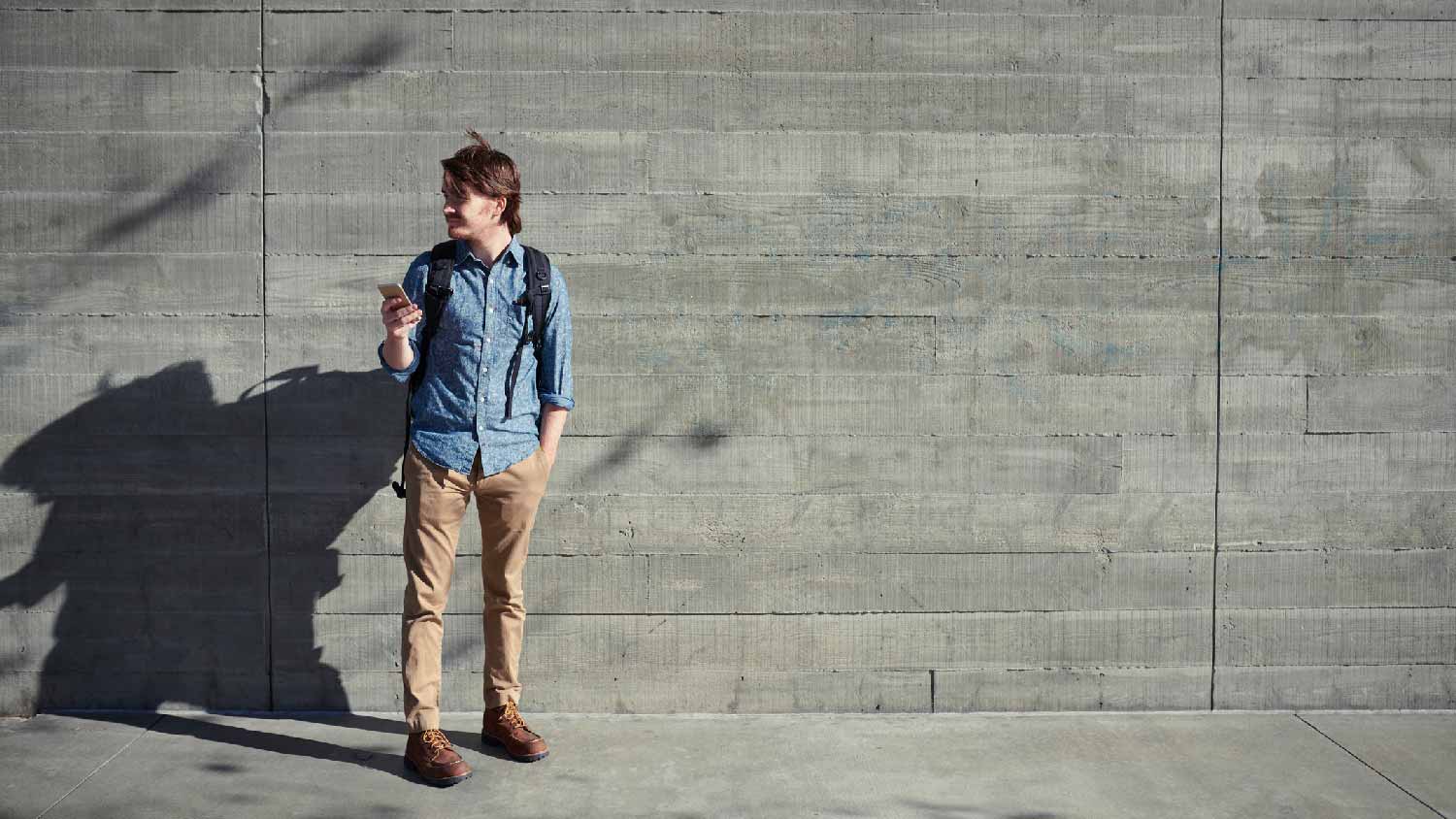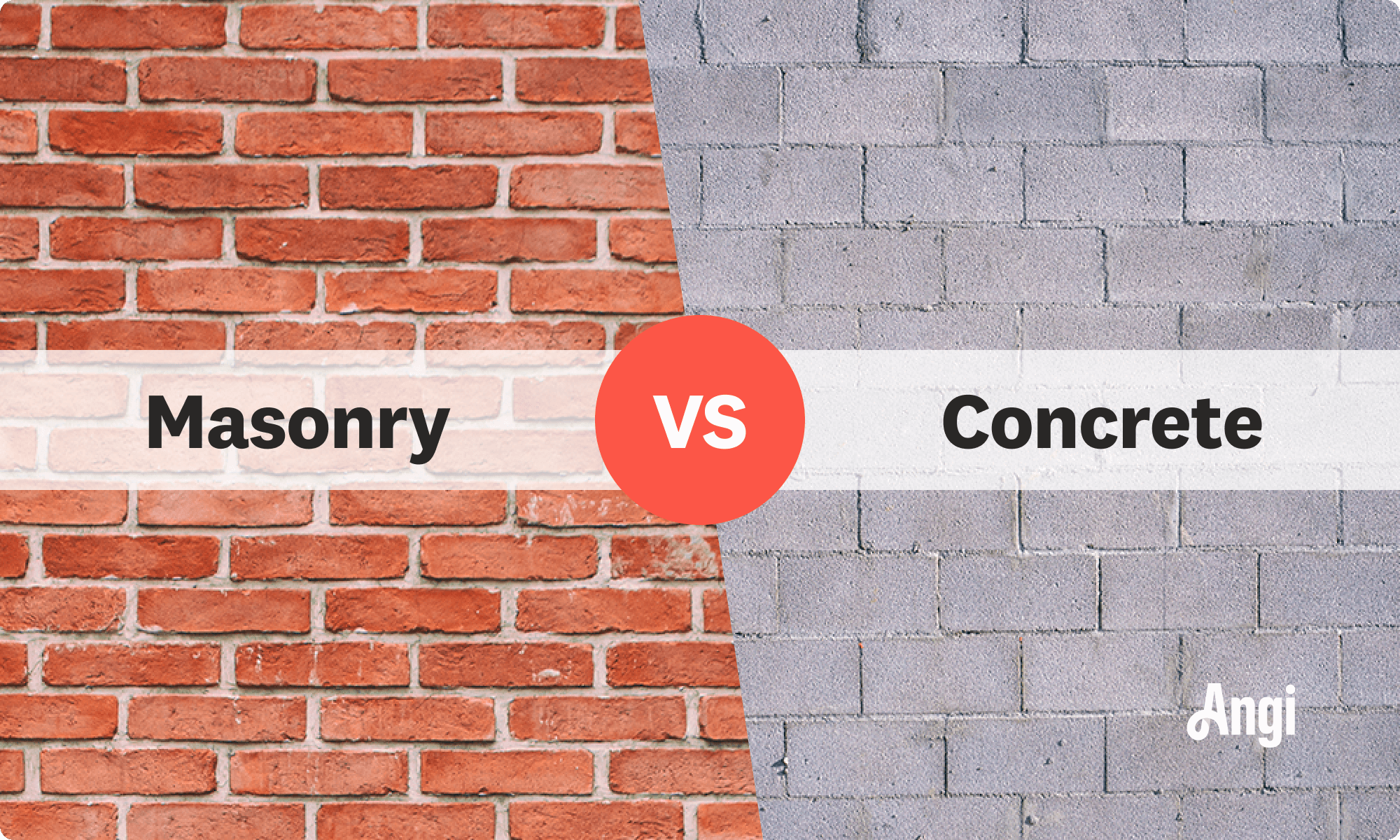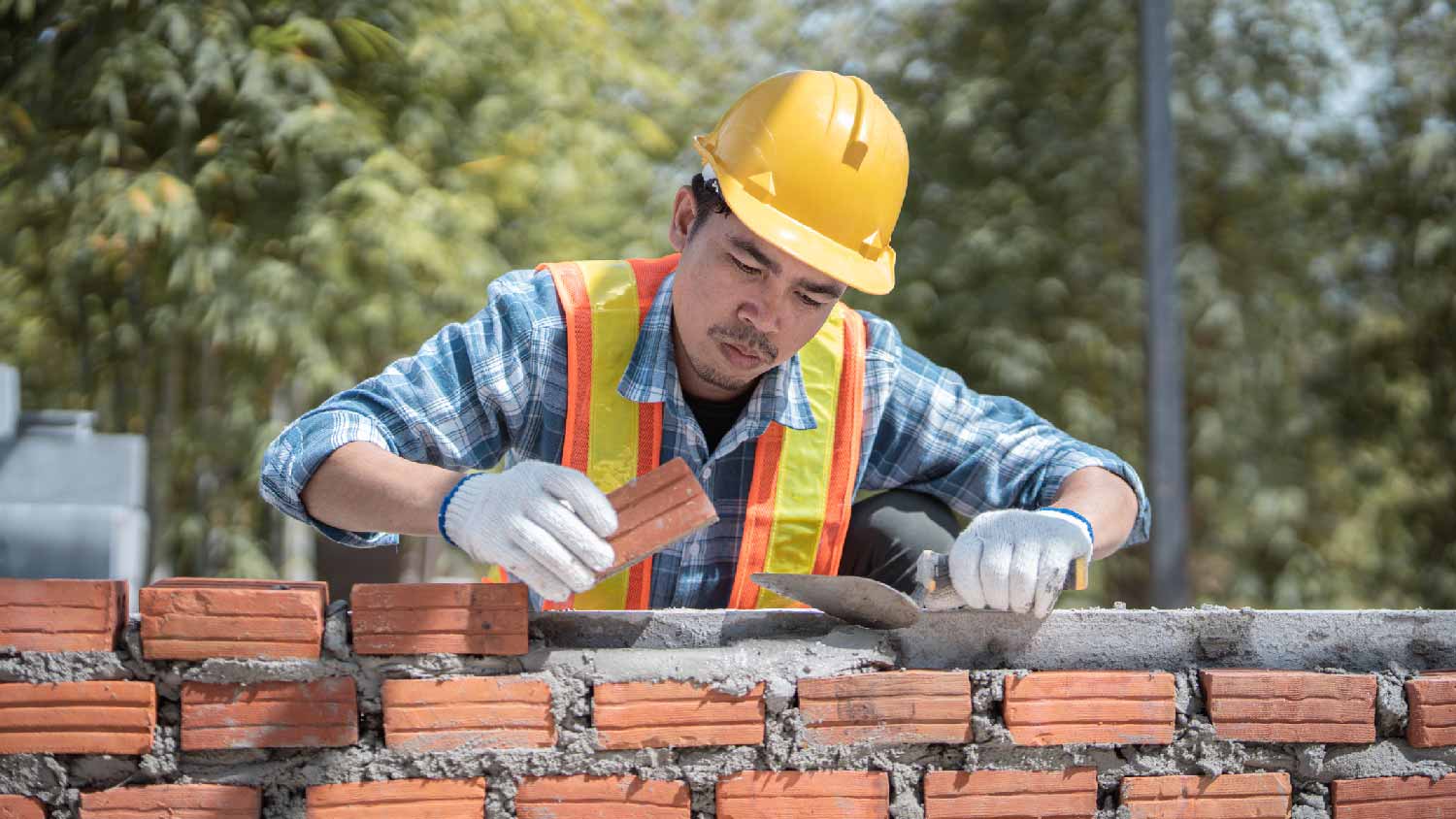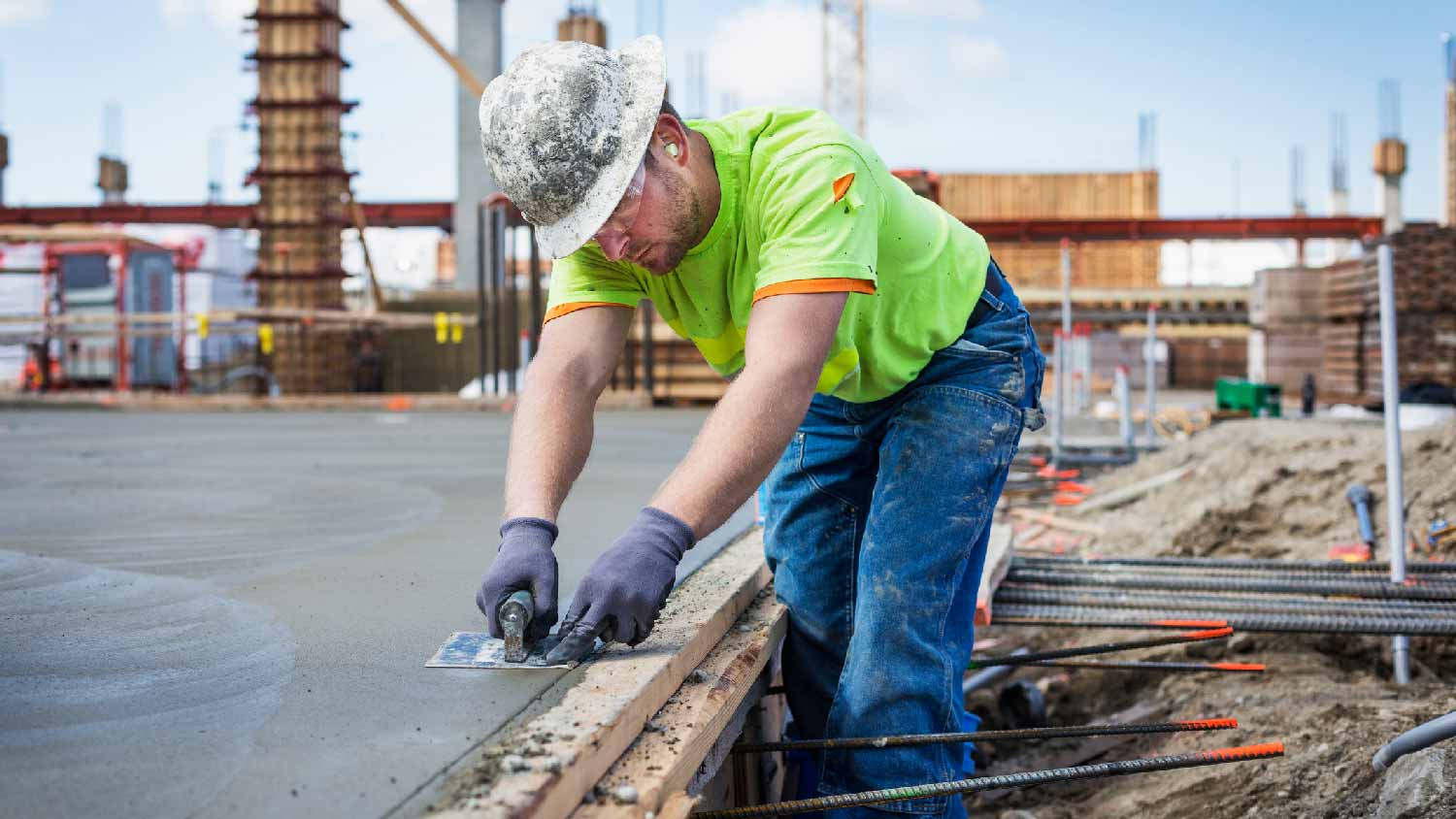
Installing new concrete steps can enhance your home’s curb appeal. Learn all the factors that can affect your concrete steps cost.
Laying the foundation for the masonry vs. concrete debate


Masonry refers to adhering individual building materials together to create a solid structure.
Concrete is a building material made from cement, sand, and aggregate, which conforms to a mold and then cures.
Builders can use both masonry and concrete to construct pathways, retaining walls, exterior stoops, and more.
Many people, including builders and contractors, use masonry as an umbrella term to refer to any work involving stone and concrete, considering concrete work a category that falls under masonry. In reality, masonry and concrete are two separate things that differ in their appearance, structural stability, and more. In this guide, we’ll explain the differences between masonry and concrete to set the record straight.
Masonry refers to the practice of connecting individual materials using mortar or grout and doesn’t refer specifically to the materials themselves. In most cases, the materials include natural stone, clay bricks, concrete bricks, and ceramic tiles. Conversely, concrete is a singular building material made from cement, sand, and aggregate, like rock or gravel.
| Type of Difference | Masonry | Concrete |
|---|---|---|
| Materials | Varied | Concrete |
| Uniformity | Low | High |
| Style | Varied | Industrial |
| Construction | Adhered materials | Poured into mold |
| Strength | Good | Excellent |
| Uses | Aesthetic | Aesthetic/structural |

Masonry and concrete differ quite a lot in terms of appearance. The materials involved, the overall look of the finished product, and the style that each fits into are all different.

One of the biggest differences between masonry and concrete is the materials involved in the construction.
Masonry includes a variety of building materials, including the following:
Marble
Granite
Other natural stone
Clay bricks
Concrete blocks
Tile
Glass blocks
On the other hand, concrete work only involves using concrete, which is made from cement, sand, and large aggregate.
Since masonry uses mortar or grout to adhere individual materials together, the appearance lacks uniformity. In many cases, this adds some intrigue and elegance to the project. A good example would be a retaining wall made out of stacked stone adhered together with mortar. The result is purposefully imperfect, creating a more natural look.
On the other hand, a builder will create a mold when building with concrete, pour the wet concrete in, and let it cure. The result is a solid concrete block, often with smooth sides and hard corners. The single block is uniform, unlike what you’d aim for with a masonry project.
Masonry can vary quite a lot in the style of homes it works with, depending on the specific building material. A natural stone fireplace, for example, can add rustic charm to a farmhouse style, while a wall made from clay bricks and mortar can provide a more industrial or post-modern look.
Concrete is more industrial, creating a hard, cool appearance with clean lines and rigid corners.

Masonry and concrete vary widely in the construction process. Masonry involves laying down single pieces of building material at a time and layering them with an adhesive, like mortar or grout. They’ll use hand tools to complete your project, contributing to a higher labor cost.
When you hire a concrete contractor, they will first construct a mold with wood and then pour the concrete into the mold to let it cure. They’ll then remove the mold from around the concrete. The tools for concrete construction include some manual tools, but your builder will mostly rely on concrete mixers and pourers to do most of the work.
The process of masonry is more involved and time-consuming, which also leads to higher building expenses. If you decide to use concrete for your next project, call a local concrete company for quotes.
Both masonry and concrete projects can last for decades with minimal loss of strength and little maintenance. However, concrete provides much greater strength overall, especially if the builder uses steel rebar to reinforce the concrete during construction.
The mortar or grout in masonry projects has low strength compared to concrete, which is why builders will use concrete more often for home foundations, where it can easily support the weight of a home and distribute its weight evenly to the soil below.
The mortar or grout in masonry projects won’t compress under weight, but it doesn’t have the same strength that concrete does and can’t take reinforcement as easily, given that the layers of mortar are thin.

The difference in strength between masonry and concrete is one reason the two materials have different building applications. Concrete is one of the strongest building materials, so it very often serves as the foundation of homes and buildings. You might see a concrete block wall—which is masonry, as the concrete blocks are held together with mortar—creating the perimeter of a basement or crawl space, but the slab serving as the floor of the foundation will always be concrete and not masonry.
Masonry can involve the use of multiple building materials, too, making it common in a wide variety of projects. Masonry is involved when tiling floors or shower surrounds, installing backsplashes behind counters, building concrete block walls or stone retaining walls, building brick walls, installing glass block windows, installing stucco siding, and more.
Concrete is most common in home foundation construction, although you might see some exposed concrete forms in modern or industrial-style homes serving as flooring, countertops, or walls.
From average costs to expert advice, get all the answers you need to get your job done.

Installing new concrete steps can enhance your home’s curb appeal. Learn all the factors that can affect your concrete steps cost.

Discover how much concrete walls cost based on factors like their size, material, location, design, and local labor rates.

Concrete is a durable material but needs maintenance every few years. Use this concrete resurfacing cost guide to get an idea of ongoing maintenance costs.

Have your patio, pool deck, or basement floor seen better days? Find out how to clean concrete floors of all varieties without damaging them.

Hairline cracks in your driveway, walkway, slab, or garage floor are common, but not ideal. Learn what to do about new concrete cracking.

Discover the average driveway resurfacing cost, key price factors, and tips to save money on your project. Get expert insights to plan your driveway resurfacing.